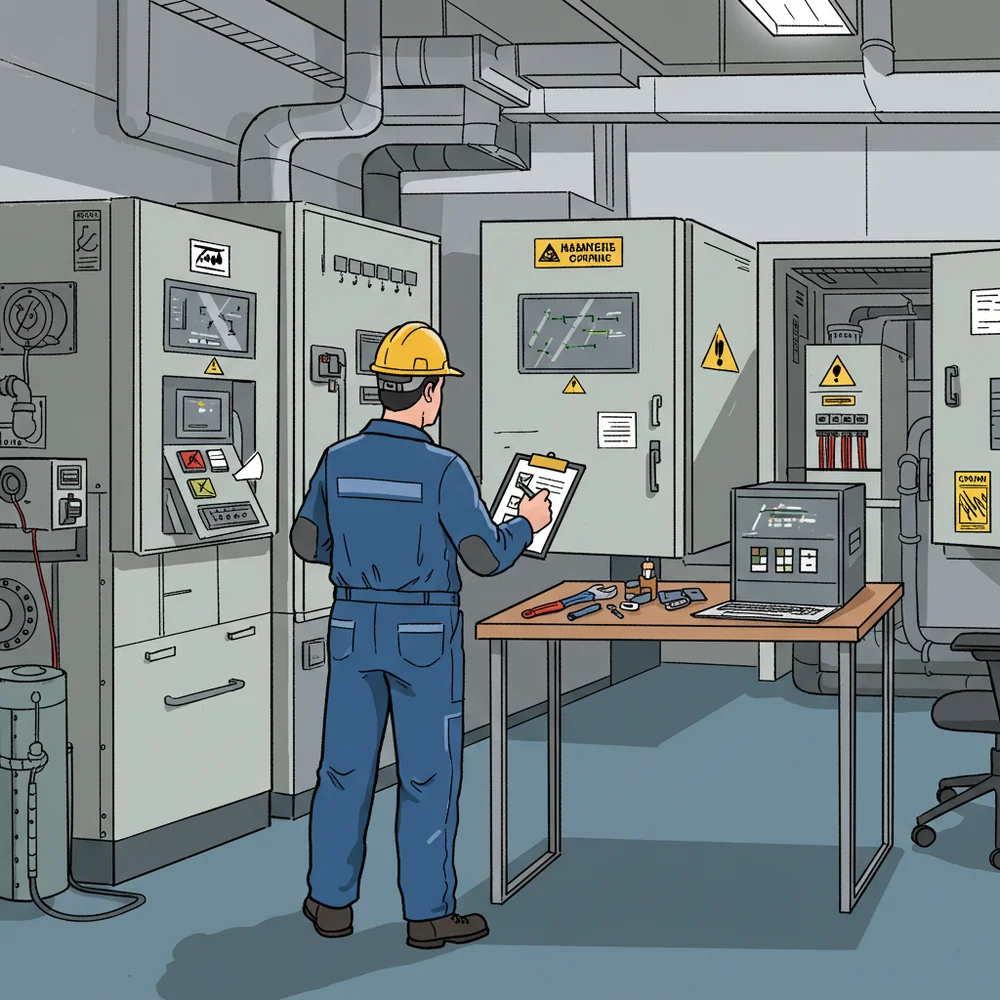
Preventive Maintenance Checklist for Safety & Compliance
Equipment Preventive Maintenance Guide
This comprehensive preventive maintenance checklist provides a systematic approach to maintaining equipment and facilities through proactive care and regular inspections. The maintenance process covers safety and compliance requirements, visual inspections, cleaning procedures, lubrication and fluid management, electrical and control systems, mechanical components, HVAC and ventilation systems, plumbing and fluid systems, calibration and performance testing, and documentation. Use this checklist to prevent equipment failures, extend asset life, ensure operational efficiency, and maintain safety standards for industrial equipment, manufacturing facilities, commercial buildings, or any critical infrastructure requiring regular maintenance.
1. Safety & Compliance
2. Visual & General Inspection
3. Cleaning & Housekeeping
4. Lubrication & Fluids
5. Electrical / Control Systems
6. Mechanical Components
7. HVAC, Ventilation & Cooling Systems
8. Plumbing & Fluid Systems
9. Calibration, Testing & Performance
10. Documentation, Reporting & Review
Overall Progress
0% complete
Checklist Progress
0% complete - Ready to download!
Related Checklists
Explore more checklists in the Maintenance Checklists category
AC Maintenance Checklist 2025: Stay Cool & Reduce Energy Bil
Comprehensive air conditioning maintenance checklist covering safety, filters, coils, electrical systems, refrigerant, and performance testing.
HVAC Maintenance Checklist: Prevent Breakdowns & Save Energy
Comprehensive HVAC maintenance checklist covering safety procedures, air filters, coils, drainage, blowers, refrigerant systems, electrical controls, and performance testing.
Furnace Maintenance Checklist: Safety, Efficiency & Reliability
Comprehensive furnace maintenance covering safety procedures, combustion systems, electrical components, and performance testing for optimal operation.
Fall Home Care Checklist to Prepare for Cold Weather
Comprehensive fall home maintenance checklist covering roof, gutters, heating systems, plumbing, electrical, and winter preparation tasks.
RV Maintenance Checklist for Reliable Trips
Comprehensive RV maintenance checklist covering engine, systems, safety, and seasonal care to keep your recreational vehicle road-ready.
Popular Categories
Most downloaded checklist categories
Audit Checklists
Ensure accuracy and compliance with audit checklists for business, finance, and safety. Organized tools for efficient auditing.
Assessment Checklists
Streamline evaluations with detailed assessment checklists. Ensure accuracy, consistency, and efficiency in academic, workplace, and project reviews.
Car Checklists
Find essential car checklists for maintenance, safety, road trips, and inspections. Stay prepared and keep your vehicle in top shape.
Safety Checklists
Stay safe with checklists for workplace, home, and emergency preparedness. Reduce risks and stay ready for any situation.
Home Checklists
Explore home checklists for cleaning, organization, safety, and maintenance. Keep your home efficient, safe, and clutter-free.
Wedding Checklists
Plan your big day with wedding checklists covering planning, budget, guests, and timeline. Stay organized from start to finish.

